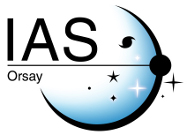Astrodynamical Space Test of Relativity Using Optical Devices I (ASTROD I)-A class-M fundamental physics mission proposal for Cosmic Vision 2015-2025
| Titre | Astrodynamical Space Test of Relativity Using Optical Devices I (ASTROD I)-A class-M fundamental physics mission proposal for Cosmic Vision 2015-2025 |
| Type de publication | Journal Article |
| Year of Publication | 2009 |
| Auteurs | Appourchaux, T, Burston, R, Chen, YB, Cruise, M, Dittus, H, Foulon, B, Gill, P, Gizon, L, Klein, H, Klioner, S, Kopeikin, S, Kruger, H, Lammerzahl, C, Lobo, A, Luo, XL, Margolis, H, Ni, WT, Paton, AP, Peng, QH, Peters, A, Rasel, E, Rudiger, A, Samain, E, Selig, H, Shaul, D, Sumner, T, Theil, S, Touboul, P, Turyshev, S, Wang, HT, Wang, L, Wen, LQ, Wicht, A, Wu, J, Zhang, XM, Zhao, C |
| Journal | Experimental Astronomy |
| Volume | 23 |
| Pagination | 491-527 |
| Date Published | Mar |
| ISBN Number | 0922-6435 |
| Numéro d'accès | WOS:000263505600001 |
| Résumé | ASTROD I is a planned interplanetary space mission with multiple goals. The primary aims are: to test general relativity with an improvement in sensitivity of over three orders of magnitude, improving our understanding of gravity and aiding the development of a new quantum gravity theory; to measure key solar system parameters with increased accuracy, advancing solar physics and our knowledge of the solar system; and to measure the time rate of change of the gravitational constant with an order of magnitude improvement and the anomalous Pioneer acceleration, thereby probing dark matter and dark energy gravitationally. It is an international project, with major contributions from Europe and China and is envisaged as the first in a series of ASTROD missions. ASTROD I will consist of one spacecraft carrying a telescope, four lasers, two event timers and a clock. Two-way, two-wavelength laser pulse ranging will be used between the spacecraft in a solar orbit and deep space laser stations on Earth, to achieve the ASTROD I goals. A second mission, ASTROD (ASTROD II) is envisaged as a three-spacecraft mission which would test General Relativity to 1 ppb, enable detection of solar g-modes, measure the solar Lense-Thirring effect to 10 ppm, and probe gravitational waves at frequencies below the LISA bandwidth. In the third phase (ASTROD III or Super-ASTROD), larger orbits could be implemented to map the outer solar system and to probe primordial gravitational-waves at frequencies below the ASTROD II bandwidth. |



